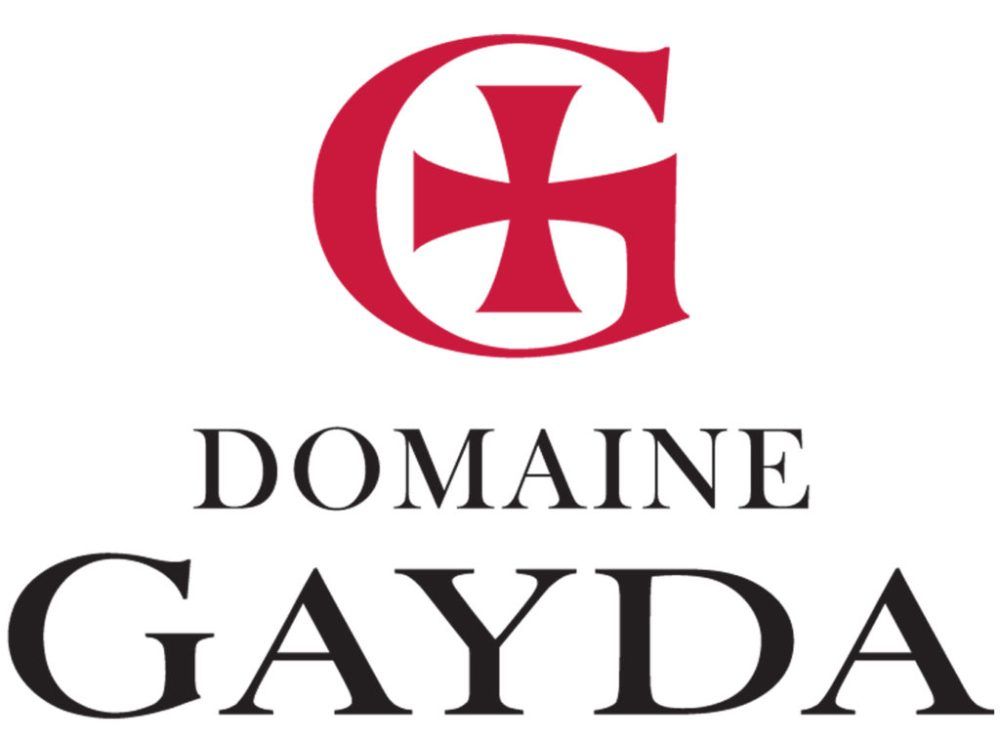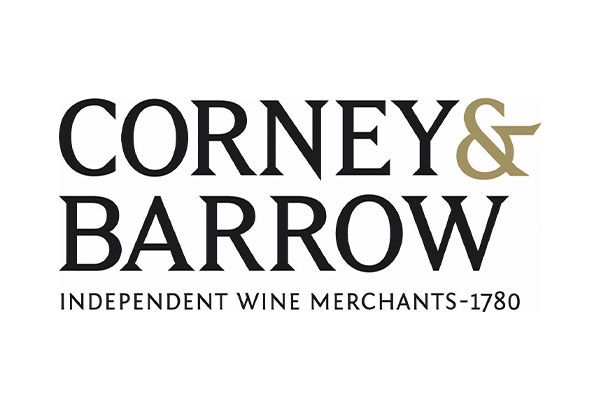Picpoul de Pinet has boomed globally over the past 20 years, becoming a recognisable name due to its easy-drinking approachable style and low price point. The appellation wines are easy to spot on supermarket shelves due to the uniform Neptune bottle which all Picpouls are required to have.
Despite its continuing popularity, however, particularly in the UK which receives one third of total production, winemakers have been experimenting with production processes to help it tap into the premium on-trade market.
One leading player in this new trend is the cooperative Ormarine, the largest producer of Picpoul which accounts for over 40% of the entire appellation's wines. It is the only Picpoul producer actually based in Pinet, where the proximity to the Étang de Thau and the Mediterranean sea has a defining influence on the wines – providing a saline freshness to complement the grape’s naturally high acidity.
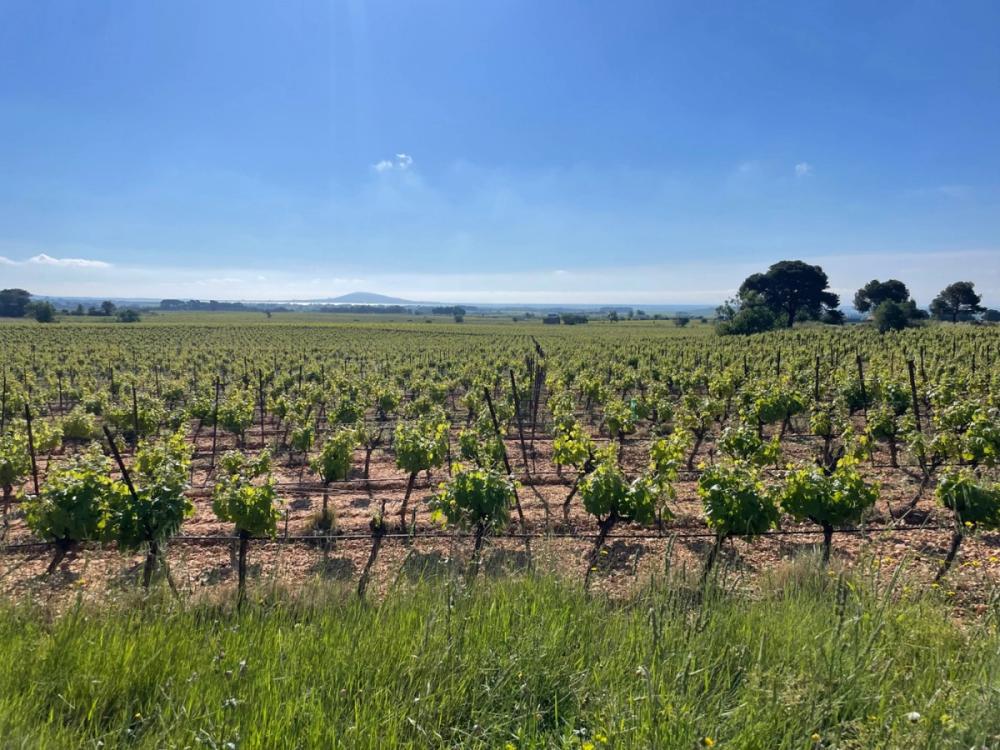
Location, location, location - the nearby Étang de Thau is key to Picpoul's minerality and salinity
I visited Cave l’Ormarine, where Iain Munson MW, head winemaker at Maison Jeanjean and Cyril Payon, director of Ormarine, guided us through the range of their Picpoul wines and took us for a walk around their vineyard, explaining the influence of its location on the wines.
Over the past few years, they have been experimenting with several new techniques to enrich the complexity of the wine, including acacia barrels, ageing on the lees and excluding sulphur dioxide. By doing this, they are looking to build on Picpoul’s success as an aperitif-style easy-drinking white wine by adding complexity, which will enable it to have an added range of gastronomic applications – such as pairing well with richer seafood dishes, cheeses and even desserts.
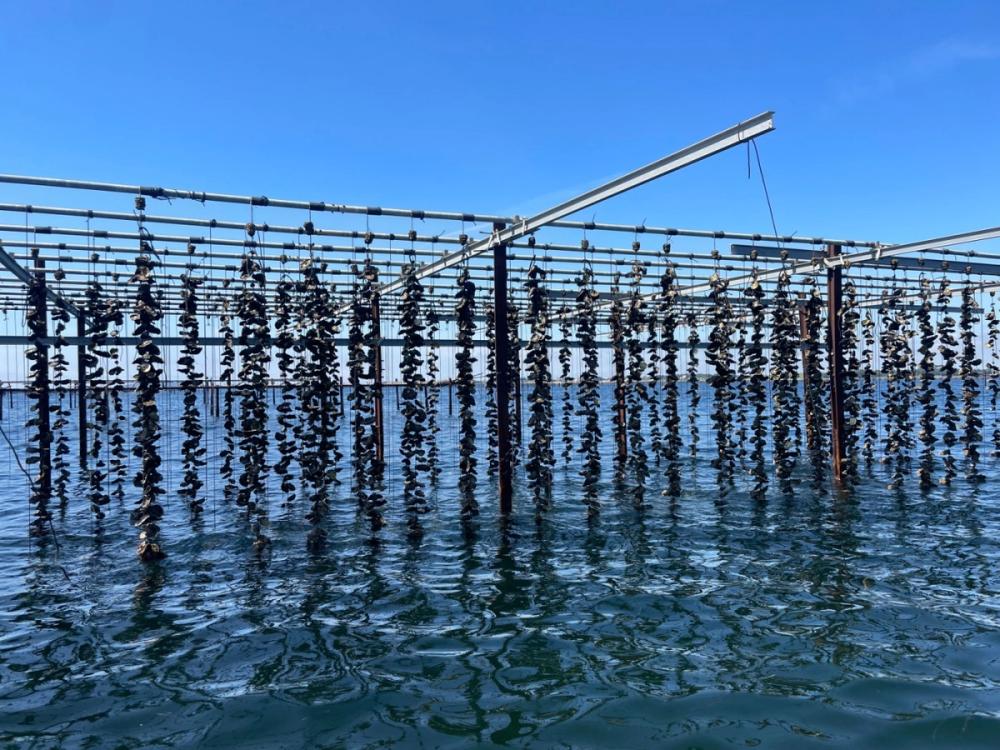
Match made in heaven: The nearby lagoon provides a large proportion of France's oysters as well as rope grown mussels
Tasting the Ormarine wines
Ormarine’s Villemarin Picpoul, with its classic Neptune bottle, is an off-trade classic, retailing at Majestic, for example, for just £11. We tasted the particularly good 2024 vintage which is zesty and crisp with notes of citrus and grapefruit. The wine has a refreshing minerality derived from the grape’s high acidity paired with the salinity from the coastal vineyards.
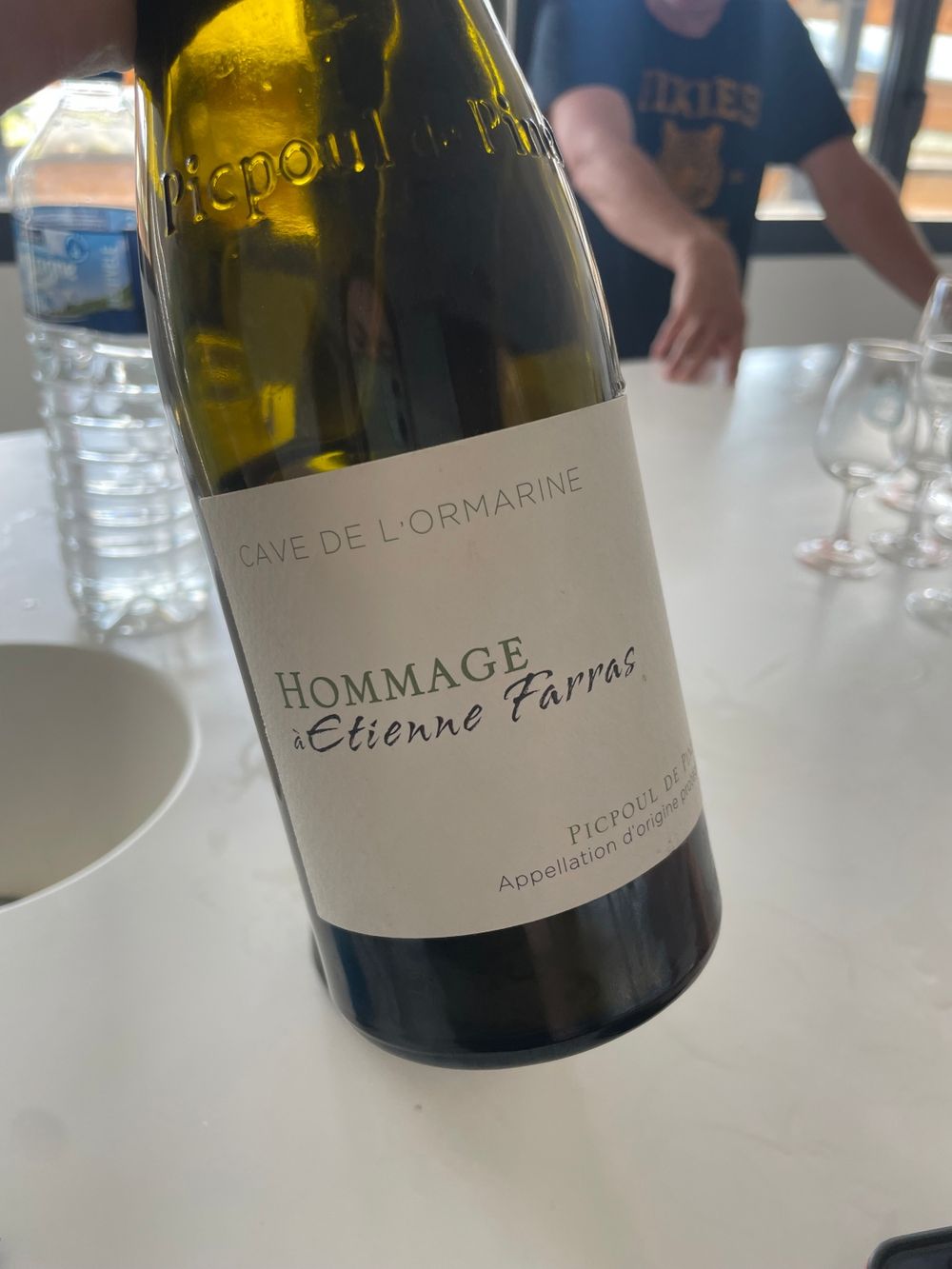
Cyril Payon then led us through a tasting of three of Ormarine’s more innovative Picpouls, each cork-sealed rather than screw-cap. We began with the Hommage à Etienne Farras, tasting two lees-aged wines from different vintages. Both the wines had bright acidity and salinity but they were yellow gold in colour and had attractive notes of acacia honey. The 2020 vintage had a slightly bitter finish, emphasising its gastronomic quality, while the 2018 vintage had notes of brioche and a slight kick of ginger spice.
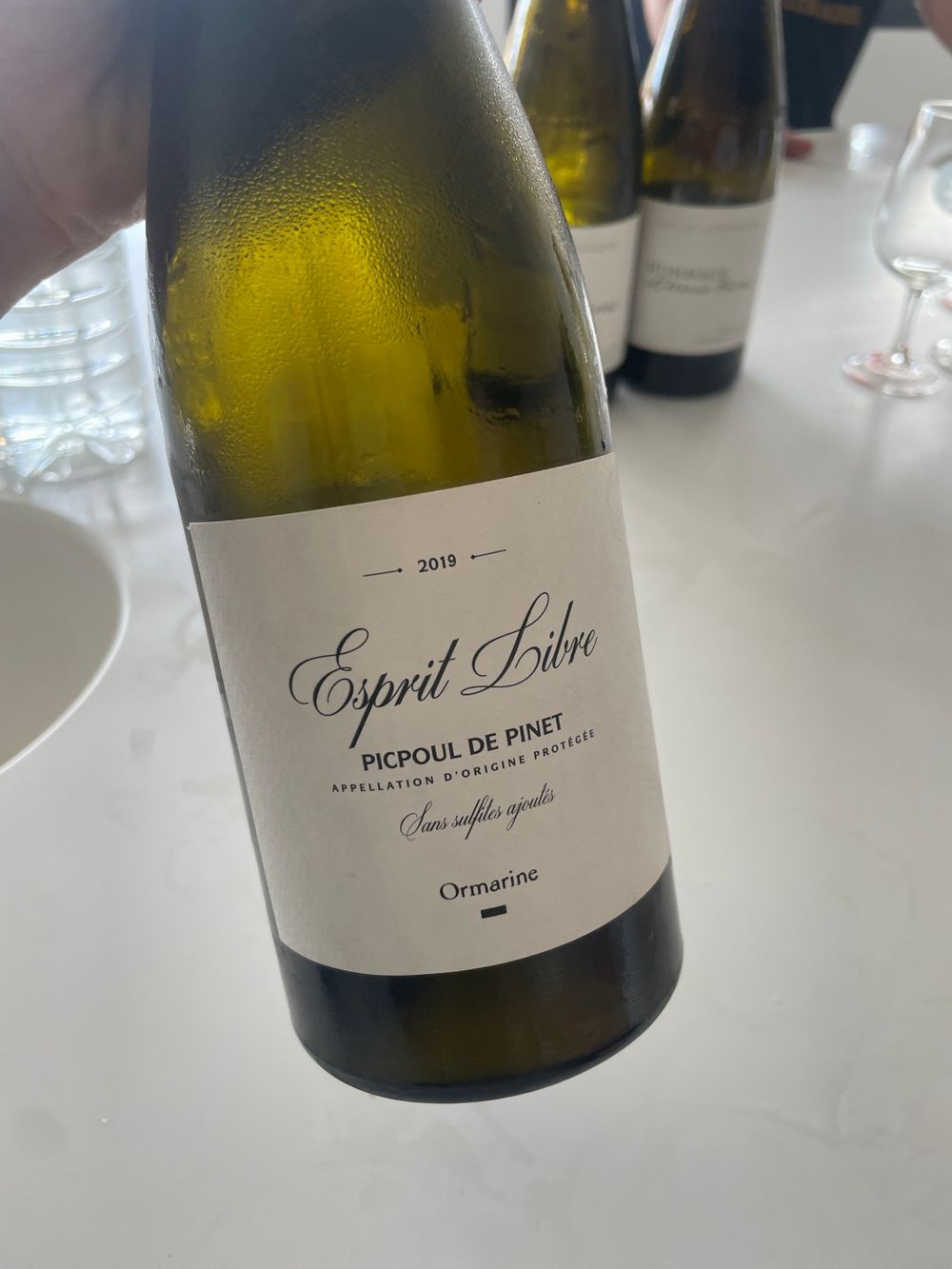
The Esprit Libre was an experimental ‘no SO2’ wine from the 2019 vintage, made to appeal to natural wine lovers. Without the sulphur dioxide, this produces a wine with notes of sultana, dried apricot, honey and marmalade alongside some nuttiness. Despite not being the favourite of Iain Munson MW, I personally think it has promise and demonstrates a link to sustainable winemaking, for which Ormarine is the only Picpoul producer to be Terra Vitis certified.
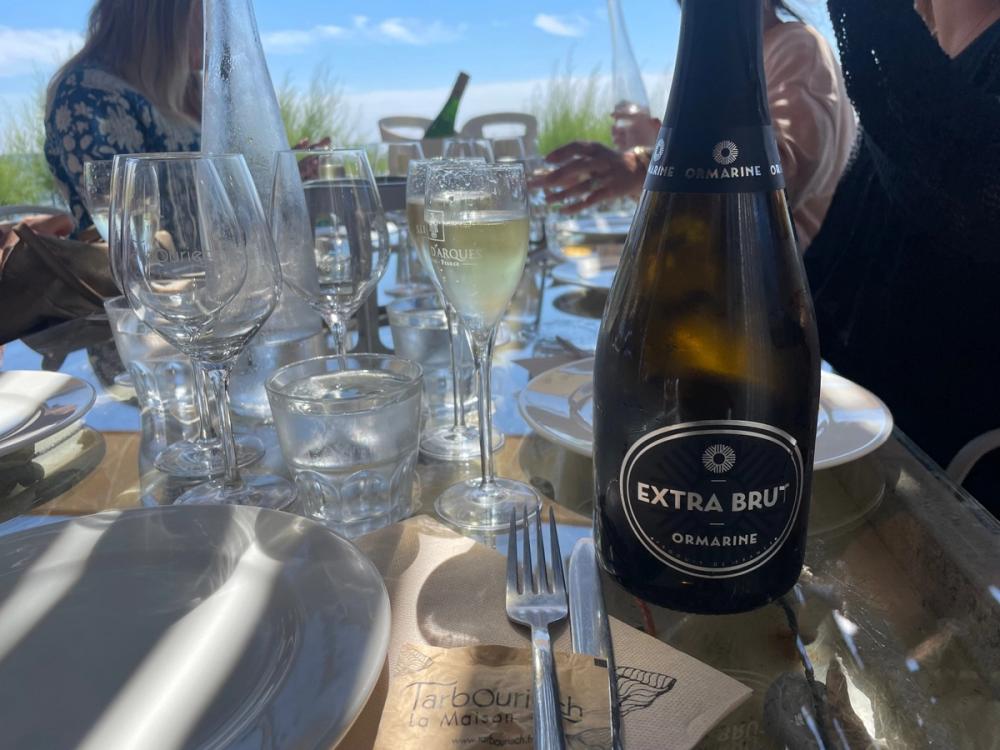
With the Étang de Thau a hub for shellfish farming, we took a trip around an oyster farm in the lagoon before enjoying a lunch pairing the wines with fresh seafood. We started with oysters and sparkling Extra Brut Picpoul, an alternative to the classic Champagne-and-oyster pairing, a market which Ormarine is actively tapping into. The wine is made from the Piquepoul grape using the traditional method and was a lovely match for an oyster with shallot vinaigrette.

We continued to enjoy the oysters with Ormarine’s refreshing Villemarin, going on to taste the Cuvee Estela, a 2023 wine aged on the lees which therefore had more texture as well as richer aromatics and notes of yellow stone fruits. The wine offered a wider range of options at the table – pairing with complex seafood dishes and cheese, for example. We tasted the Estela paired with rich saucy mussels, and later with a cheese platter from local fromagerie Les Fromages du Saigon, which all paired wonderfully.
Enjoying seafood from the lagoon and wines from the proximate vineyards emphasised how sustainable the meal was, with everything sourced locally.

Picpoul that goes with pudding
The afternoon consisted of a pastry workshop making pear frangipane tarts, where my skills were certainly lacking. But with some professional help I managed to produce a delicious end product which we paired with the 2020 Acaciae, my personal favourite of all the wines.
Aged in acacia barrels, it does not overpower the delicate flavours of the Piquepoul grape yet adds complexity. It has notes of honey and sap and retains the freshness of the wine with lower acidity, pairing beautifully with the frangipane tart.
It was fantastic to taste and experience these new Picpouls, which are certainly above and beyond those found on supermarket shelves or pub menus. There is arguably space for restaurants to have two Picpouls on the menu – one of the classic aperitif-style and one with a more gastronomic quality to pair with rich seafood. They are excellent value for money and tap into an already growing market where Picpoul is becoming more of a recognised regional brand.














